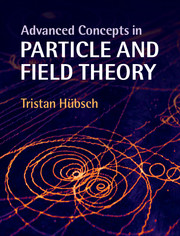Book contents
- Frontmatter
- Epigraph
- Contents
- Preface
- I Preliminaries
- II The Standard Model
- III Beyond the Standard Model
- 8 Unification: the fabric of understanding Nature
- 9 Gravity and the geometrization of physics
- 10 Supersymmetry: boson–fermion unification
- 11 Strings: unification of all foundations of reality
- IV Appendices
- A Groups: structure and notation
- B A lexicon
- C A few more details
- References
- Index
9 - Gravity and the geometrization of physics
from III - Beyond the Standard Model
- Frontmatter
- Epigraph
- Contents
- Preface
- I Preliminaries
- II The Standard Model
- III Beyond the Standard Model
- 8 Unification: the fabric of understanding Nature
- 9 Gravity and the geometrization of physics
- 10 Supersymmetry: boson–fermion unification
- 11 Strings: unification of all foundations of reality
- IV Appendices
- A Groups: structure and notation
- B A lexicon
- C A few more details
- References
- Index
Summary
There exist excellent textbooks on Einstein's theory of gravity, ranging from non-technical introductions [329, 469, 187, 10, 231] to technically detailed ones [264, 367, 390, 55, 205, 414, 103, 548, 210, 131, 164, 66, 135, 96, 398, 506, 272, 315, 380, 342], as well as on tensor differential calculus in curved spaces [[508, 62, 563, 210] to begin with], which is typically regarded as a prerequisite for a technical mastery of the material. The purpose of this chapter then cannot compete with these rich and detailed sources nor with textbooks on black holes and wormholes [103, 543], gravity in general and cosmology [418, 481, 419, 28, 558], and the interested Reader is wholeheartedly directed to this literature.
Complementing these resources, the general theory of relativity as a theory of (classical, i.e., non-quantum) gravity is here presented in comparison with Yang–Mills gauge theories from Chapters 5–8, thus continuing the unifying guiding idea that led us to this point; approaches to quantum gravity will be addressed in Chapter 11
9.1 Einstein's equivalence principle and gauge symmetry
Most books that discuss general relativity and gravity – regardless of the technical level – start off with A. Einstein's principle of equivalence. Complementing this historically standard approach, gravity and general relativity may also be described and even “discovered” by (1) carefully examining the possible spacetime geometries as frameworks for real physical observations as done by R. Geroch [205]; (2) exploring the appearance and use of multi-valued fields [magnetic monopole, Section 5.2.3] in a variety of physical models as done by H. Kleinert [315]; or (3) modeling the familiar gravitational and inertial phenomena from the point of view of a particle theory virtuoso as done by R. P. Feynman [164].
Borrowing from these approaches, we do start with Einstein's equivalence principle, but show that it is conceptually identical to the idea of gauge symmetry employed in Chapters 5 and 6.
- Type
- Chapter
- Information
- Advanced Concepts in Particle and Field Theory , pp. 315 - 356Publisher: Cambridge University PressPrint publication year: 2015
- 1
- Cited by

